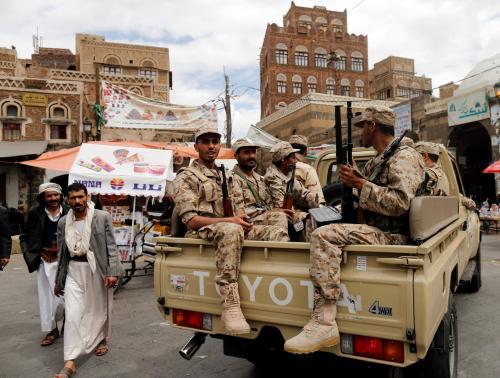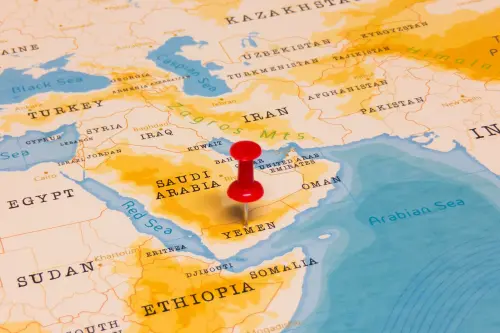In conventional warfare, it is fairly obvious if a war is being won. Movement of the front lines, industrial production of war material and logistical sustainability of forces in the field provide fairly clear standards by which to assess trends. But counterinsurgency and stabilization operations like the ones in Iraq are much more complex. How do we measure progress in such a situation? The administration has just done so on an interim basis. Gen. David Petraeus and Ambassador Ryan Crocker will be asked to do so again in September, just before the expected showdown between Congress and President Bush over the 2008 war budget.
This is a hard challenge because metrics are easily misused. In Vietnam, for example, we were convinced that there would be a “crossover point” in attrition of the Viet Cong. If we could manage to kill enough of them, say 50,000 a year, their recruiting efforts would not be able to keep pace, and the combined American and South Vietnamese forces would ultimately prevail. That led to a focus on massive firepower that killed huge numbers of innocents and failed to achieve its military objective.
Our conviction that the Viet Cong needed hundreds or thousands of tons of supplies daily led to additional bombing of the Ho Chi Minh Trail and ultimately Cambodia as well—again to no avail, as it turned out that the Viet Cong in South Vietnam needed very little outside help. Our focus on supporting a government with strong anti-communist credentials led to dependency on a corrupt regime with limited legitimacy among its own people. Our hopes of sparking GDP growth in Vietnam were dashed because the country’s economic successes were enjoyed by only a small fraction of the population. Finally, our focus on enlarging and equipping South Vietnamese security forces could not compensate for their qualitative deficiencies.
The experience of successful counterinsurgency and stabilization missions in places such as the Philippines and Malaysia, by contrast, leads us to place a premium on tracking trends in the daily lives of typical citizens. How secure are they, and who do they credit for that security? How hopeful do they find their economic situation, regardless of the nation’s GDP or even their own personal wealth at a moment in time? Do they think their country’s politics are giving them a voice?
Many of these questions are broad and murky enough that simple answers cannot be distilled from one or two quantitative metrics. That helps explain why our Iraq Index at the Brookings Institution has included more than 50 key indicators since we began it in late 2003, and why this week’s Bush administration report included 18. Further complicating matters is that information is often unreliable. The recent Iraqi government claim that Iraqi civilian fatalities in June declined 36% relative to the previous baseline is suspect. If true, it would mean a significant and meaningful improvement—but is it really accurate, and if so, will the trend hold up through the summer?
We are probably condemned to an inconclusive debate come September. Supporters of the surge will look for promising trendlines and war critics will underscore the negative. Is there a way to make sense of the coming cacophony? Here are some simple suggestions, organized into the three subjects most widely recognized as crucial in counterinsurgency.
· Security. Overall civilian fatality rates from war-related violence must go down in Iraq if there is to be any hope of a better future. Beyond the national tally, it is important to look regionally and ask where reductions (or increases) are the greatest. Such reductions could suggest successful strategies that, if generalized, might offer hope in other regions. It is also useful to track various types of violence. Sectarian-motivated assassinations declined in Iraq this spring, suggesting that the Shiite militias in particular were being partially deterred. But if one category of violence decreases while another goes up, it is hard to speak of much progress, returning us ultimately to the overall civilian fatality rate as the key variable within this category. So far, the bottom line in Iraq this year is not very encouraging—the overall reduction of some 10% in civilian fatalities nationwide, by our estimates, leaves things still substantially worse than they were in 2003 through 2005.
U.S. (and Iraqi) troop fatalities are also hugely important in the American debate. But an increase in these numbers, while clearly tragic, is difficult to interpret. If it results from harder fighting and more effective patrolling, it is at least possible that the sacrifices could result in a better security environment down the road. Trends in the number of enemy combatants killed or arrested are also important—though of course we must be wary of body counts in wars where it is difficult to determine the affiliations of the deceased. Increases in the number of Iraqi security forces taking primary responsibility for local security are encouraging. But we do not yet know if they will be able to do so in the ethnically mixed neighborhoods in and around Baghdad, Mosul and Kirkuk.
· Economics. Unfortunately, we probably cannot hope for much progress in the Iraqi economy by September. There is just too much violence. Even if the security situation began to improve this summer, it would almost surely remain worse than it had been from 2003 through 2005. The economy did not improve much in those years; it won’t likely do so in the short term now. Could there be more limited progress? Perhaps. We could, for example, have expanded job creation programs in order to quickly reduce unemployment. Indeed, the military has used its Commander Emergency Response Program funds for just this purpose on a small scale for years, and President Bush seemed to endorse the idea in his Jan. 10 speech announcing the surge. But there has been little follow up.
In addition to reducing unemployment, it is important to improve utility performance—electricity, housing fuels, availability of gasoline for cars, water and sewer, and telephone systems. Of these, only telephone and gasoline trends have shown any real improvement in Iraq over the years. The state of health care and education must improve as well. But we have been stymied by the lack of data about them, and what information does exist is not promising. Had the 18 benchmarks mandated by Congress included more such economic indicators, this week’s report card would have been even bleaker.
· Politics. This will probably be the deciding factor in our September debate, as it should be. Gen. Petraeus is fond of saying that politics are 80% of any counterinsurgency operation, and military efforts only 20%. Regardless of whether or not that ratio is right, the broad message is hard to deny. The recent Iraqi decision to forward a draft hydrocarbons bill to the full parliament is not an adequate accomplishment in this regard (as the administration’s report rightly recognized): Actual results that begin to affect daily life and governance are needed.
Given the nature of the failed Iraqi state, it is unrealistic to expect radical progress by late summer. Most political parties will remain highly sectarian and most Iraqi citizens will be distrustful of anyone outside their own group. The majority of normal parliamentary activities—passing laws, creating budgets and implementing legislation—will remain in a fledgling state.
Results should be achievable in making political compromises that allow the process of healing to begin. That is, if Iraqis are willing to make the effort. There must be an actual deal to share oil revenues fairly across all provinces, and a similar agreement on reforming de-Baathification law so it does not punish lower-level former party members. There should be at least initial progress on devolving more resources to the provinces and allowing them to hold elections, on finding a fair way to deal with disputes around the mixed city of Kirkuk, and on purging ministries of militia extremists. The administration’s recent claim that such developments cannot be expected soon, and are lagging rather than leading indicators of progress, is unconvincing. Without major progress on such matters soon, there is little hope for a reduction in sectarian tensions and thus little hope for the success of the overall strategy.
September is going to be a tense month in Washington. But we do know enough about counterinsurgency and stabilization missions to impose some structure on the debate. Metrics are dangerous and easily abused. But they may also be just about the best thing we have to inform our debate, keep our politicians honest, and help those Americans still legitimately confused about Iraq to figure out what they really think.



Commentary
Op-edMeasuring Progress in Iraq
July 13, 2007